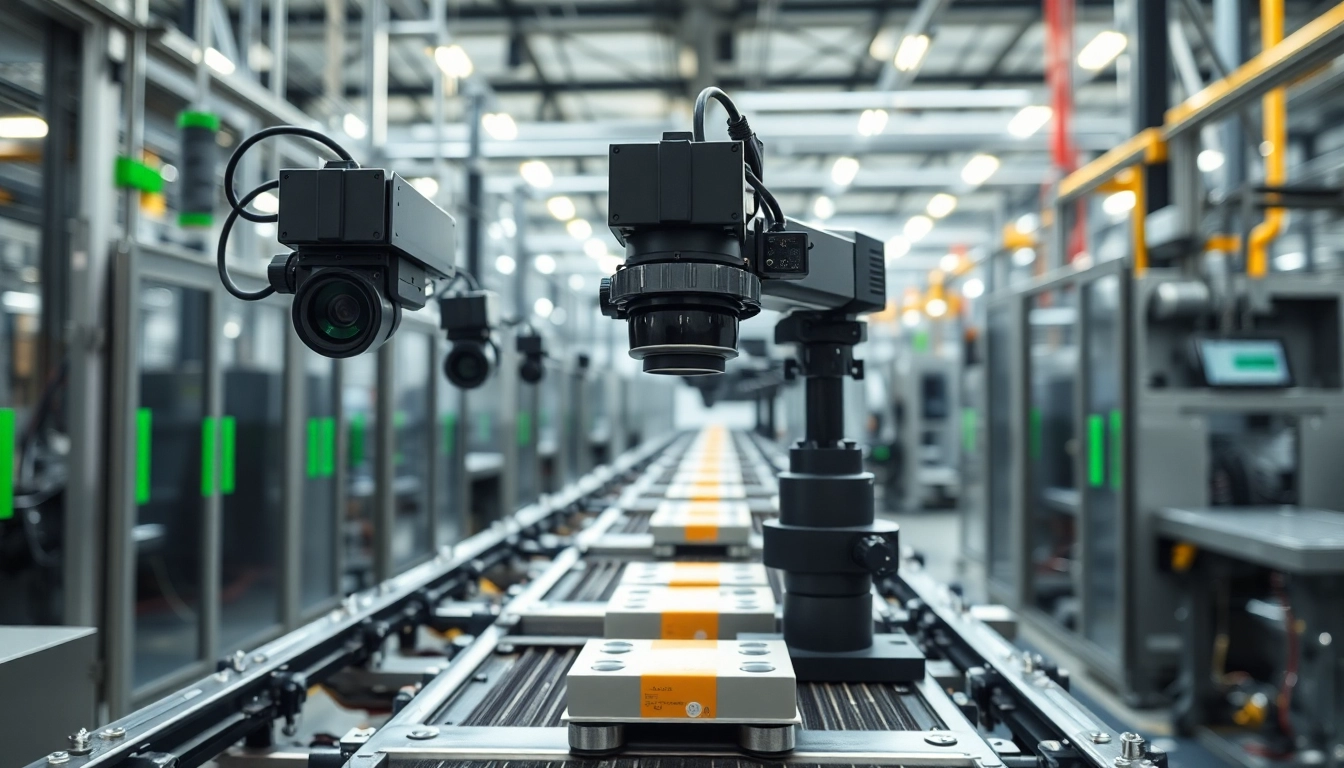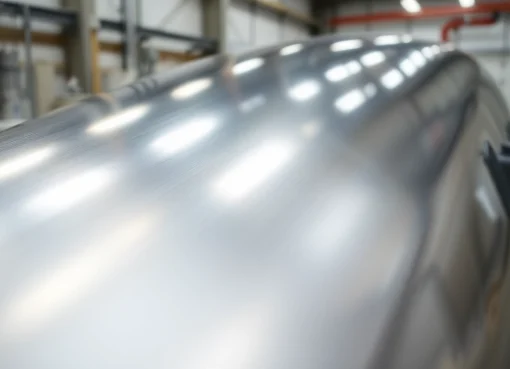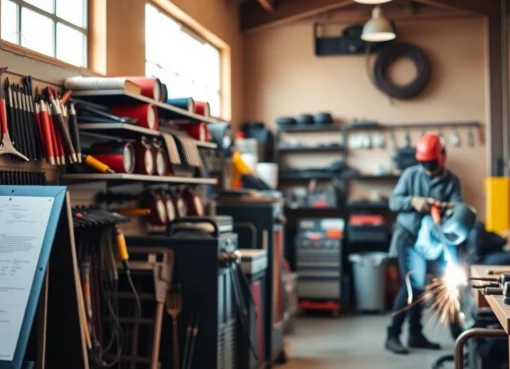Understanding Machine Vision: Applications, Benefits, and Future Trends

Introduction to Machine Vision
In the modern industrial landscape, technological innovations are reshaping the ways companies operate, making processes more efficient and more reliable. One such technological advancement that has gained significant traction is machine vision. This technology leverages computer algorithms, cameras, and imaging tools to enable machines to perceive and interpret visual data. As industries strive for automation and enhanced quality control, understanding the components, applications, and benefits of machine vision is critical.
What is Machine Vision?
Machine vision refers to technologies and methods that allow machines to ‘see’ and evaluate objects or scenes, emulating human visual perception. It involves capturing images of components or products through thermal and optical sensors, which are then processed through algorithms to extract meaningful information. This process can identify patterns, defects, and anomalies, making it integral to many automated systems.
Key Components of Machine Vision Systems
The effectiveness of machine vision lies in its components, each playing a vital role:
- Cameras: Industrial cameras or sensors capture high-resolution images, crucial for accuracy in detection and analysis.
- Illumination: Proper lighting is essential; various types of lighting (LED, laser, etc.) enhance the visibility of features in the images.
- Processing Units: These include powerful CPUs or GPUs that perform image analysis using deep learning algorithms, extracting and interpreting data from images.
- Software: Specialized software tools perform the heavy lifting of analyzing images, enabling functionalities such as defect detection, part identification, and more.
Importance in Modern Industry
Machine vision has become a cornerstone of manufacturing and quality control in various industries, from automotive to electronics. Its importance lies in its ability to enhance production rates, reduce human error, and improve safety. Automation through machine vision systems leads to faster inspections, consistent quality checks, and a substantial reduction in operational costs. Moreover, with the rise of Industry 4.0, the integration of machine vision into smart factories showcases its critical role in the digital transformation of manufacturing.
Applications of Machine Vision
Quality Control and Defect Detection
One of the most significant applications of machine vision is in quality control and defect detection. By employing camera systems and sophisticated image processing, manufacturers can automatically inspect products at high speeds, identifying defects that a human inspector might miss:
- Automated Inspection: From detecting scratches on a printed circuit board to ensuring that no parts are missing in a complex assembly, machine vision systems streamline quality assurance protocols.
- Real-time Feedback: These systems enable immediate response actions, correcting defects as they occur during the manufacturing process rather than at the end, minimizing waste.
Robotics and Automation Integration
Machine vision is paving the way for smarter robots capable of performing intricate tasks. By integrating machine vision systems, robots can navigate environments, recognize objects, and accurately handle them in various applications:
- Pick and Place Applications: In warehouses and production lines, robots equipped with machine vision can identify and sort items, improving efficiency and accuracy.
- Autonomous Vehicles: Machine vision technology is essential for the navigation and obstacle detection capabilities of self-driving cars, allowing safe and efficient transportation.
Enhancing Manufacturing Efficiency
Through machine vision, manufacturers can optimize their operations significantly. By utilizing real-time data collected from vision systems, companies can:
- Improve Cycle Times: Automated inspections reduce the time products spend in quality control.
- Enhance Traceability: Machine vision systems maintain a visual record of product quality, enabling traceability throughout the production lifecycle.
Benefits of Implementing Machine Vision
Cost Reduction and Increased Productivity
Implementing machine vision leads to substantial cost savings for companies. It automates repetitive inspection tasks that would otherwise require manual effort, allowing businesses to:
- Reduce Labor Costs: Fewer manual inspections mean lower payroll expenses related to quality control.
- Decrease Scrap Rates: Early detection of defects minimizes waste, saving resources and maximizing production capacity.
Improved Accuracy and Consistency
Machine vision technology surpasses human capabilities in accuracy and consistency. Human inspectors can become fatigued and may overlook subtle defects. In contrast, machine vision systems offer:
- Higher Precision: With pixel-level analysis, machine vision can detect inconsistencies or minute defects that are invisible to the naked eye.
- Uniform Standards: Machine vision ensures that every product is inspected to the same standards, leading to consistently high-quality outputs.
Real-time Data Analysis
Another significant advantage of machine vision is its capacity for real-time data analysis. Manufacturing environments thrive on timely information, and machine vision systems deliver actionable insights that streamline operations:
- Instant Data Feedback: Immediate analysis of quality metrics allows for quick adjustments to manufacturing processes.
- Data Collection for AI Training: Machine vision systems can generate vast datasets that assist in training machine learning models, enhancing decision-making processes over time.
Machine Vision vs. Computer Vision
Understanding the Differences
While machine vision and computer vision are often used interchangeably, they serve different purposes and are designed for various applications. Machine vision typically refers to industrial applications that require specific inspections and automation processes. In contrast, computer vision is a broader concept encompassing algorithms and techniques for enabling machines to interpret visual data in various contexts, including healthcare, self-driving vehicles, and more.
Use Cases for Each Technology
Machine vision is commonly applied in industries where inspection and quality control are paramount. Examples include:
- Automated assembly lines for electronics.
- Quality checks in food processing.
On the other hand, computer vision is used in diverse fields:
- Facial recognition technology in security systems.
- Medical imaging analysis.
Synergies and Collaborative Applications
Despite their differences, machine vision and computer vision can work synergistically. For example, in a manufacturing setup, machine vision might handle quality checks while computer vision technologies analyze user interactions or improve automation logistics. Combining strengths results in comprehensive solutions that enhance operational effectiveness.
Future Trends in Machine Vision
Advancements in AI and Machine Learning
The integration of artificial intelligence and machine learning technologies is set to revolutionize machine vision. With these advancements, systems can learn from previous inspections, adapt to new situations dynamically, and improve their detection capabilities over time:
- Self-learning Algorithms: Future machine vision systems will utilize AI to continually enhance their accuracy without human intervention, leading to systems that ‘learn’ current techniques to identify defects.
- Deep Learning Applications: By employing neural networks, machine vision can significantly improve object recognition and classification tasks.
Integration with IoT Solutions
As IoT technology continues to expand, the marriage of machine vision with IoT will create robust systems that provide unprecedented insight into manufacturing processes. Key developments include:
- Smart Factories: Machine vision systems connected to IoT devices will enable intelligent production lines that self-optimize based on real-time conditions.
- Remote Monitoring: Stakeholders will have access to visual data remotely, allowing for better oversight and management of operations across multiple locations.
Potential Market Growth
The future appears bright for the machine vision market, with estimates indicating significant growth driven by technology adoption across sectors. Factors fueling this growth include:
- Increasing Automation: The rise in demand for smart, automated systems in manufacturing and logistics.
- Focus on Quality Control: Growing awareness of the importance of product quality, coupled with advancements in technology.
In summary, as industries continue to evolve, machine vision stands at the forefront, enabling businesses to achieve higher efficiency, accuracy, and reliability. Understanding this technology is vital for companies looking to thrive in an increasingly competitive global market.



Leave a Comment